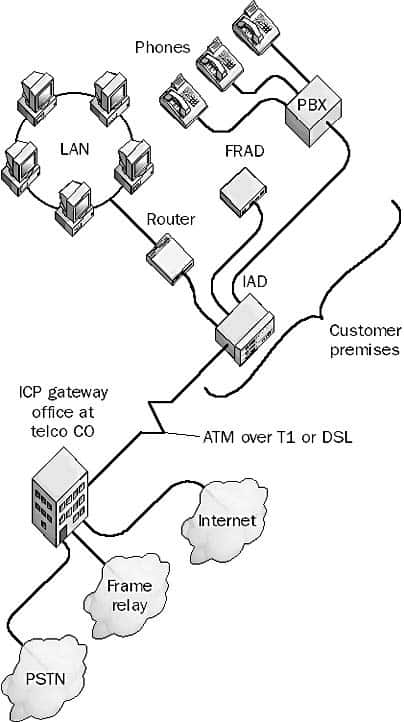Definition of Integrated Communications Provider (ICP) in Network Encyclopedia.
What is ICP (Integrated Communications Provider)?
ICP stands for Integrated Communications Provider, is a telecommunications service provider that offers one-stop shopping for voice and data telecommunications through a single integrated architecture. Use of an integrated communications provider (ICP) can save companies a considerable amount of money compared to leasing the services separately from Regional Bell Operating Companies (RBOCs), competitive local exchange carriers (CLECs), or incumbent local exchange carriers (ILECs).
How it works
The main difference between an ICP and a traditional carrier service provider is that an ICP generally installs a single, all-in-one integrated access device (IAD) at the customer premises that enables voice and data traffic to be serviced over a single line.

This provides for easier management than using multiple lines with different technologies and devices. The IAD connects to the provider by using an Asynchronous Transfer Mode (ATM) connection over a single T1 line or Digital Subscriber Line (DSL) circuit at the local loop.
(About 80 percent of the customer cost for ICP services is for the ICP’s rental of local loop access from an RBOC). At the provider end, many ICPs are building their own integrated ATM backbone networks so that they can better control the services they offer.
TIP
While the cost of using an ICP might be less than that of using an RBOC or a CLEC, the ICP might not offer some services, such as toll-free long distance and DSL services. You should also be sure that you understand how the various services are billed before you sign a contract.
Some ICPs use time-division multiplexing (TDM) to allow a single T1 line to carry voice, data, and video over 24 DS0 (Digital Signal Zero) channels. In this scenario, you might be paying for bandwidth that you are not using, because TDM dedicates slots of bandwidth to services whether or not data is being carried in these slots. You can generally get better value from ICPs that use ATM circuits between the subscriber and provider because ATM can use statistical multiplexing, which allocates bandwidth dynamically between voice and data. However, the disadvantage of the ATM approach is that if the line goes down, all voice and data transmission is interrupted, while with the TDM approach, customers might still have access to analog phone lines if such lines are used.